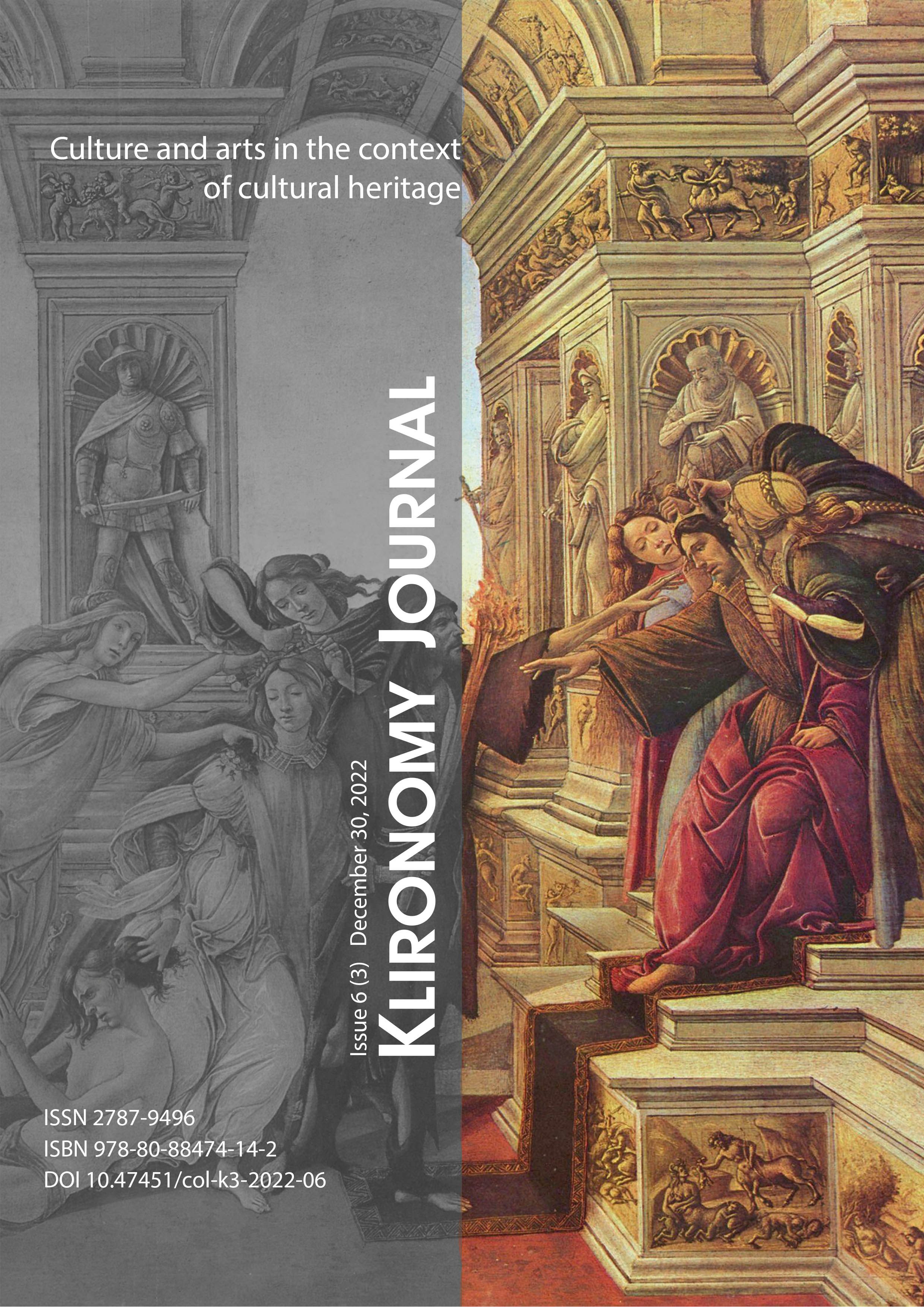Features of the Technique of “Multilayered Painting” Based on a Comparative Analysis of the Qualifying Works of Students of the Department of Decorative Painting of the Higher School of Folk Arts
DOI:
https://doi.org/10.47451/art2022-11-01Keywords:
Nizhny Tagil, multilayered painting, traditional solution, innovative approach, furniture, decorative painting student, qualifying workAbstract
The appearance of lacquer painting on metal, the birthplace of which is Nizhny Tagil, refers to the conditional date of 1746. This type of traditional arts and crafts originated in the Urals. Mining painting acquired stable features of the established craft. Houses and their interior decoration, wooden dishes and other kitchen utensils, chests and tin things were decorated with elegant paintings. Since the mid-18th century, lacquer saucers and trays have been in demand. Later, there is a division into complex multilayered and simple swoop painting. The article analyses the qualifying works performed by students studied under higher education programmes in the technique of Nizhny Tagil multilayered painting. The focus is on the system of traditional and innovative artistic and technical techniques for the decorative design of works, mainly furniture items. The research uses methods of descriptive and formal stylistic analysis of works of art. The characteristic artistic-stylistic, compositional and technological features of the Nizhny Tagil painting are considered. An attempt is made to identify the common features inherent in the Nizhny Tagil multilayered painting, as well as the distinctive features of the works of artists. To achieve this purpose, monographic publications and scientific articles of Russian researchers in folk art were used.
Downloads
References
Baradulin, V. A. (1990). Siberian painted tray. The art of lacquer miniature and decorative painting on metal. Collection of the Scientific Works of Scientific Research Institute of Artistic Crafts. Moscow: Scientific Research Institute of Artistic Crafts. (In Russ.)
Fedotova, O. V. (2010). Features of professional education in lacquer miniature painting. Moscow: ITPI. (In Russ.)
Golubeva, A. N. (2004). Sources of formation of Tagil lacquer painting. The First Khudoyar readings: Reports and Communications, 6-61. Nizhny Tagil: Ural School of Applied Arts. (In Russ.)
Golubeva, A. N. (2015). Nizhny Tagil decorative painting. Traditional applied art: a textbook for bachelors studying in Decorative and Applied Arts and Crafts (Vol. 1, pp. 191–200). St. Petersburg: Higher School of Folk Arts. (In Russ.)
Grigorieva, K. M. (2013). The genesis of professional education in the field of Nizhny Tagil lacquer painting. Questions of Cultural Studies, 8, 84–89. (In Russ.)
Kurakina, I. I. (2018). Theory and history of traditional applied art: educational and visual aid for independent and extracurricular work of students studying in the direction of Decorative and Applied Arts and Crafts (Vol. 1). St. Petersburg: Higher School of Folk Arts. (In Russ.)
Neklyudov, E. G. (1996). About the role of N.N. Demidov in the development of Tagil painting in the first half of the 19th century. Russia and Western Europe: Interaction of industrial cultures. 1700-1950. Reports of Participants of the International Scientific Conference in Nizhny Tagil, 1. Yekaterinburg: Bank of Cultural Information. (In Russ.)
Nekrasova, M. A. (2003). Folk art of Russia in modern culture. Moscow: Collection M. (In Russian)
Silonova, O. N. (2010). Works of local historian I. A. Orlov on the history of tray fishing. Tagil Local Historian, 20, 64–65. (In Russ.)
Ukhanova, I. N. (1990). Unity of traditions of the Russian painted tray. The art of lacquer miniature and decorative painting on metal. Collection of scientific papers. Moscow: Scientific Research Institute of Artistic Crafts. (In Russ.)
Published
Issue
Section
License
Copyright (c) 2025 Klironomy

This work is licensed under a Creative Commons Attribution 4.0 International License.
The Klironomy is an open access journal. Articles are available free of charge as PDF files on the website of the European Institute for Innovation Development. PDF files can be previewed with Acrobat Reader from www.adobe.com.
All articles of the Klironomy are published under a Creative Commons Attribution 4.0 Generic (CC BY 4.0) International license.
According to the Creative Commons Attribution 4.0 Generic (CC BY 4.0) International license, the users are free to Share — copy and redistribute the material in any medium or format for any purpose, even commercially (the licensor cannot revoke these freedoms as long as you follow the license terms).
Under the following terms:
- Attribution — You must give appropriate credit, provide a link to the license, and indicate if changes were made. You may do so in any reasonable manner, but not in any way that suggests the licensor endorses you or your use.
- No additional restrictions — You may not apply legal terms or technological measures that legally restrict others from doing anything the license permits.





